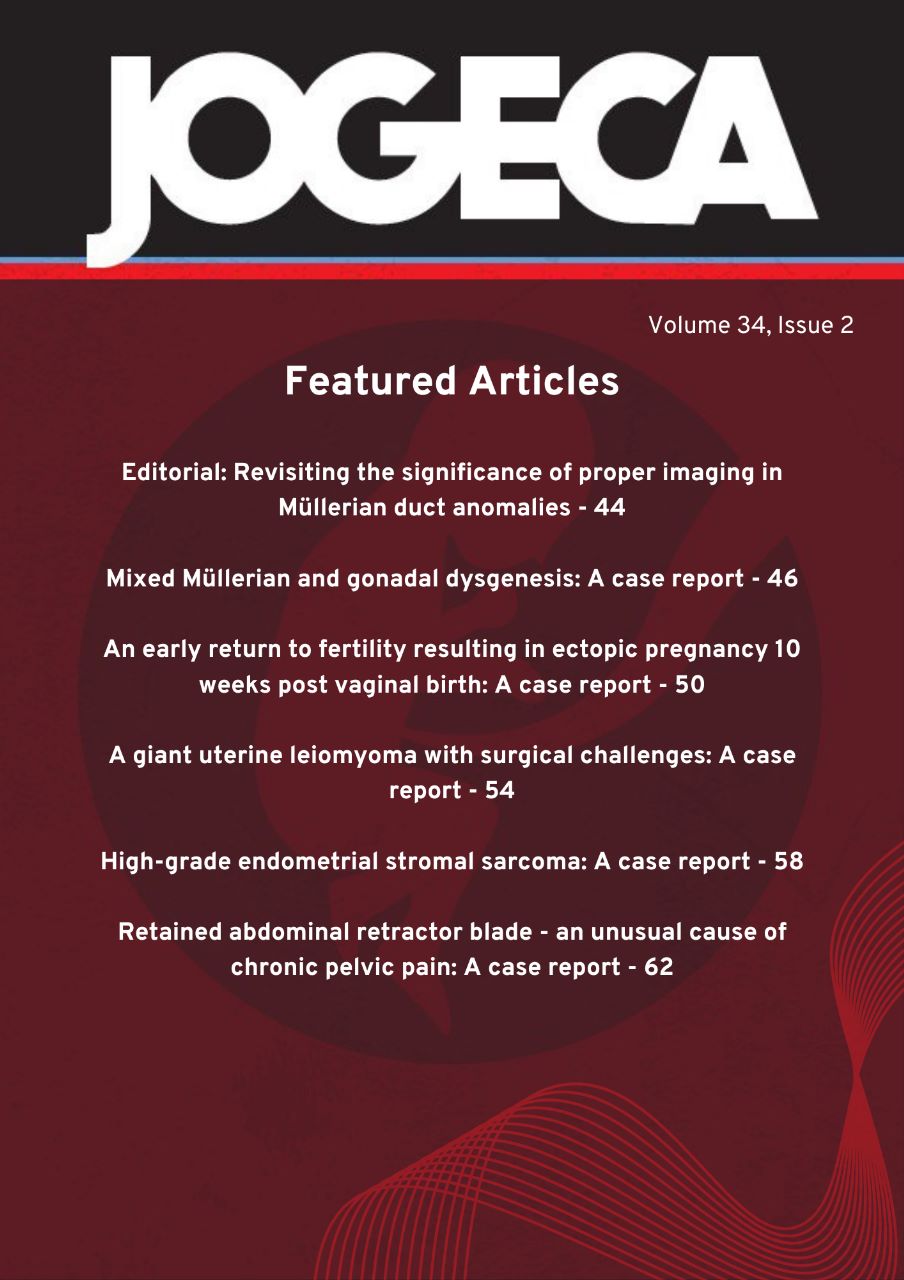Impact of the group antenatal care model at Machakos County Referral Hospital, Kenya
DOI:
https://doi.org/10.59692/jogeca.v36i1.129Abstract
Background: According to the World Health Organization, antenatal care (ANC) is defined as “timely, appropriate, evidence-based actions related to health promotion, disease prevention, screening, and treatment with targets to reduce complications from pregnancy and childbirth, such as stillbirths and perinatal deaths”. The WHO recommends the adoption of the eight antenatal care model, whereby the health care provider interacts with the pregnant woman in eight contacts, as compared to the individual antenatal care model that had four visits. The eight ANC contacts are easily achieved through group antenatal care whereby pregnant women of similar gestational age are placed in groups or cohorts and then receive care together in the following ANC clinic days.
Objective: To assess the impact of a group antenatal care model at Machakos County Referral Hospital.
Methods: The group antenatal care model was rolled out at Machakos County Referral Hospital in April 2022. A record review was done from the summary report register for the following periods: February to July 2021 (before group ANC) and February to July 2023 (after group ANC). Results: The number of clients who revisited the antenatal clinic in the study period for the year 2021 was 2075, whereas those who revisited the clinic in the same study period were 4057, with 688 clients having attended the group antenatal care.Conclusion: There was an increase in the number of pregnant women who attended ANC services among pregnant women in 2023. A possible contributing factor to this may be associated with the introduction of group antenatal care where the pregnant women interacted seven times with the nurses and therefore more entries to the register.
Downloads
Published
How to Cite
Issue
Section
Categories
License
Copyright (c) 2024 The Authors.

This work is licensed under a Creative Commons Attribution 4.0 International License.




